Laser Tattoo Removal Healing Process
Serious adverse reactions during laser tattoo removal healing are extremely rare. If you’re following your technician’s advice, you’re unlikely to run into any long term complications from laser removal. Here, we’ll discuss several relatively common responses that should not cause alarm.
Whats the White stuff?
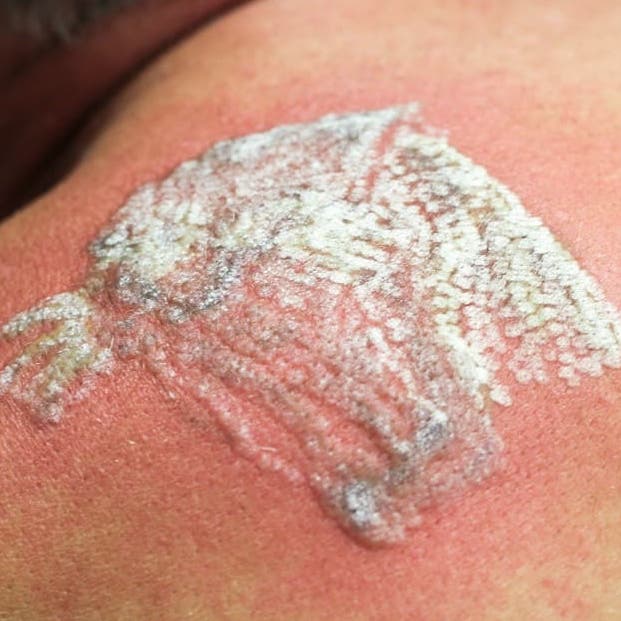
FROSTING
The white frosting you see right after a laser tattoo removal is very much a good thing. This reaction indicates the laser is penetrating the ink effectively. On top of that, it also shows that your body is reacting and healing quickly. This does not mean your tattoo is gone, but that we have a good start to the process. Note that just because you do not see frosting at every session does not mean that you did not get a good treatment. Typically toward the end of your treatments we can see less frosting and more perpura(see below).
Typical Side Effect of the Laser Tattoo Removal Process
There are three main types of adverse reactions. Redness, swelling, and blisters. Let’s explain what causes each of them, what it looks like, and whether there is cause for concern.
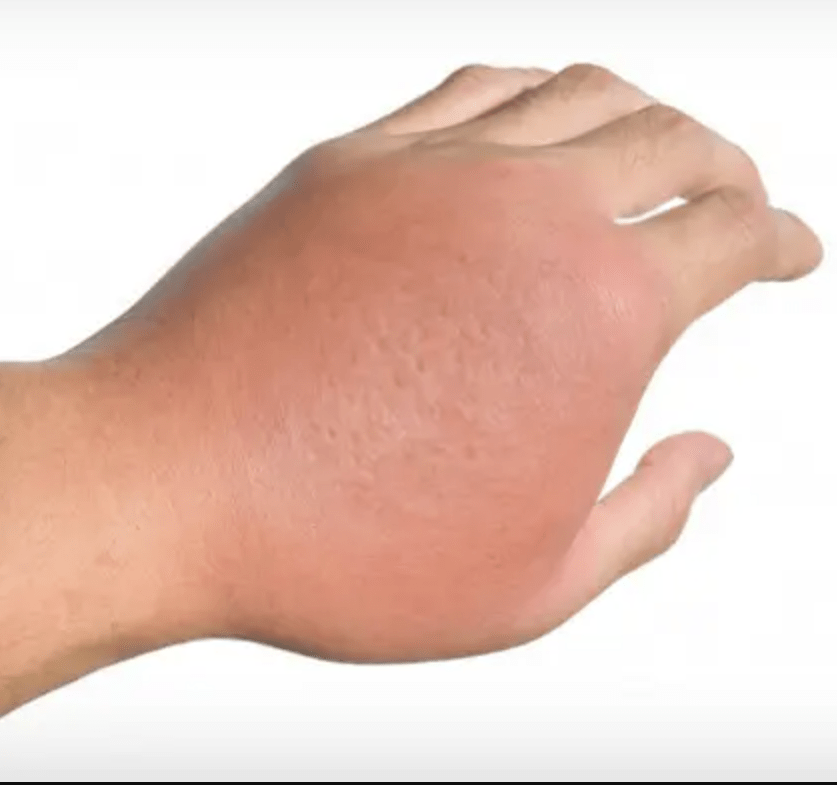
SWELLING
Most clients experience swelling directly after the removal session and throughout part or all of the first week after treatment. This should not cause concern. However, if you have any questions about your body’s response to the treatment, you can always call your technician. In nearly all cases, the specialist simply puts the client’s mind at ease, assuring them that the swelling is totally normal.
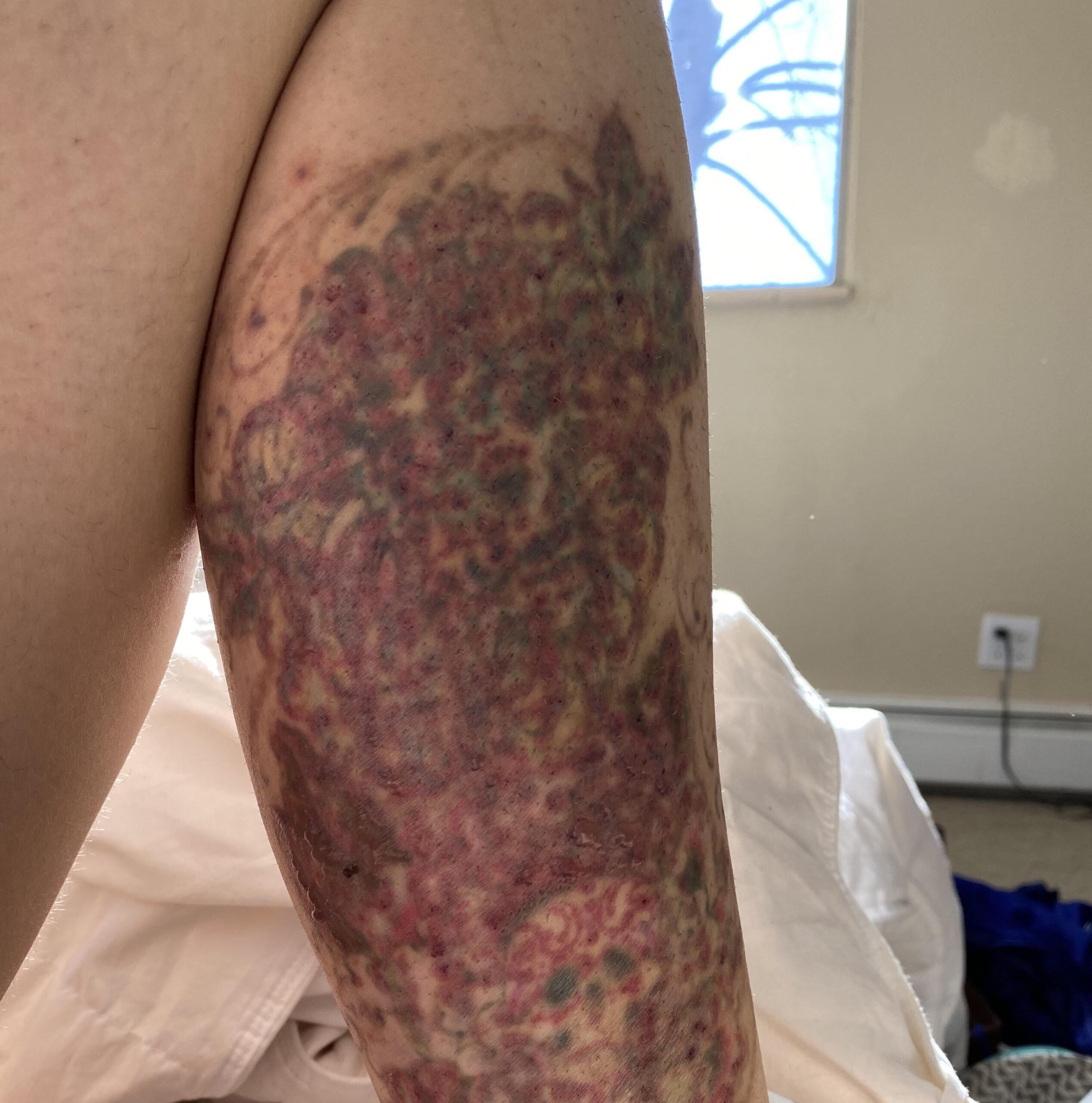
REDNESS/PURPURA
In some cases after a treatment you can see redness, formally called PURPURA (epidermal bruising), in the area treated by laser removal. It typically lasts for a week to two weeks at most and will resolve on it’s own. The redness is caused by capillaries leaking into the skin, which helps with the body’s immune response triggered by the removal session. This should not cause alarm, as the increased blood flow helps to flush out the affected ink.
NOTE: We typically see this happen more often towards the end of a treatment series so don’t be alarmed if if happens after you have had several treatments where it did not appear.
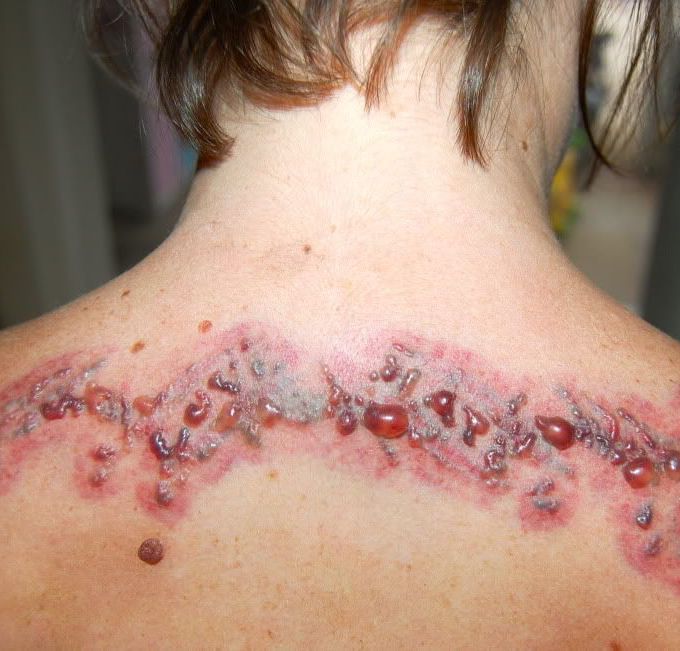
BLISTERING
Often clients experience blistering during tattoo removal healing. Do NOT attempt to pop the blister, let it resolve naturally. It will usually take a few days before the blister ruptures. Keep the area clean and moist with Triple Antibiotic Ointment and avoid getting wet. Clean clear or pink drainage after the blister pops is normal. Everyone heals at a different rate but if you get a blister expect 2 weeks of healing time.
In the rare case the the blister does not deflate on it’s own after 3-4 days please call the Clinic at 206-935-5689.
Infection is rare, but you should know the signs to look for just in case. Tattoo removal infection signs include being hot to the touch, a rash, chills, or discharge from the treated area. Call Well Medical Arts at 206-935-5689 if you experience any of these symptoms.
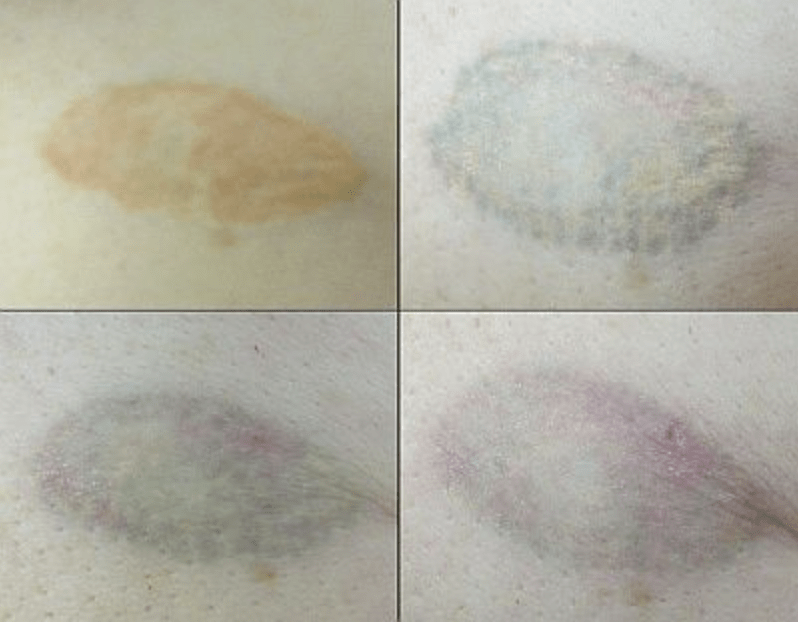
OXIDATION / TATTOO GETS DARKER
In some cases the tattoo removal can turn a tattoo darker, this is most often caused by Oxidation. Oxidation happens because of the presence of metals in the ink used in tattoos. Oxidation happens when the ink breaks down and the metal particles combine with oxygen. Tattoo ink can contain different types of metal – nickel, lead, chromium, aluminum or others. We most often see oxidation with tattoos where white has been mixed in to achieve a desired color.
How often do these side effects happen?
Although blisters happen on occasion and swelling is completely normal, significant adverse reactions are extremely rare. You’re very unlikely to have a response that requires any follow-up attention. Allergic reactions can happen every great once in a while, but they’re rare and not severe. Cooper has never seen a client have to seek out medical care.
Though side effects of removal are not generally serious, tell your technician about any reactions you experience. We strive to stay in close communication with clients throughout the laser tattoo removal healing process and want to hear about any complications that may arise.
What makes healing time take longer?
Picking at blisters or scratching the area could potentially prolong the laser tattoo removal healing process by not allowing the skin to heal completely. This can also cause infection or permanent scarring. Simply leave the area alone and allow the body to heal naturally.
Also drink plenty of water, exercise regularly, and avoid smoking, which can prolong the time removal takes because it hinders the immune system.
